Lena Stone Pillars – The Extraodrinary 500-Year-Old Forest In Russia
| HTTP://ENGLISHRUSSIA.COM/?P=5202#MORE-5202 |
Lena Pillars (Russian: Ле́нские столбы́, tr. Lenskiye Stolby; Yakut: Өлүөнэ туруук хайалара, Ölüöne Turūk Khayalara) is the name given to a natural rock formation along the banks of the Lena River in far eastern Siberia. The pillars are 150–300 metres (490–980 ft) high, and were formed in some of the Cambrian period sea-basins. The highest density of pillars is reached between the villages of Petrovskoye and Tit-Ary. The Lena Pillars Nature Park was inscribed on the World Heritage List in 2012.
The site lies around 180 kilometres (110 mi), less than a day’s boat ride, upriver (south) from the city of Yakutsk, the capital of the autonomous Sakha Republic.
| Photo: Natural World Site Heritages |
Lena’s Pillars are a natural rock formation which was made a World Heritage site in 2006. Numerous fossils and ancient organisms can be found at these pillars, and the area is important for its fossil record of the explosion of life in the lower Cambrian. It has also been the site of many mega-fauna fossils such as mammoth (Mammuthus primigenius Blum), bison (Bison priscus Boj), woolly rhinoceros (Coelodonta antiquitatis Blum), Lena horse (Equus lenensis Russ), and reindeer (Rangifer tarandus L). Evidence of ancient human life can be seen from the rock paintings and manuscripts from the area.
Numerous fossils and ancient organisms can be found at these pillars, and the area is important for its fossil record of the explosion of life in the lower Cambrian. It has also been the site of many mega-fauna fossils such as mammoth (Mammuthus primigenius Blum), bison (Bison priscus Boj), woolly rhinoceros (Coelodonta antiquitatis Blum), Lena horse (Equus lenensis Russ), and reindeer (Rangifer tarandus L). Evidence of ancient human life can be seen from the rock paintings and manuscripts from the area.
Although Lena’s Pillars are an amazing sight to behold, be aware of the long (and expensive) trip ahead of you, as well as the lack of basic comforts and amenities due to the remoteness and isolation of the of the area.
| Photo: Russiatrek |
Tourism
One may plan a river cruise by contacting a travel service in the city of Yakutsk. Those interested in limnology or ecotourism, and others who visit Lake Baikal, can coordinate a river sojourn with the aid of a guide from the Lake Baikal region; however, consider that Yakutsk, the world’s coldest city and where the river cruises originate, is approximately 1,400 kilometres (870 mi) northeast of Lake Baikal.
Few modern amenities exist in this part of Russia, unless one travels by cruise ship on the Lena River. Tit-Ary on the other side of the river has a gravel road from Yakutsk.
Hiking trails in the region are steep and at times precarious.
Lake Baikal
| Photo: Adventure |
Lake Baikal, Russian Ozero Baykal, also spelled Ozero Bajkal, lake located in the southern part of eastern Siberia within the republic of Buryatia and Irkutsk oblast (province) of Russia. It is the oldest existing freshwater lake on Earth (20 million–25 million years old), as well as the deepest continental body of water, having a maximum depth of 5,315 feet (1,620 metres). Its area is some 12,200 square miles (31,500 square km), with a length of 395 miles (636 km) and an average width of 30 miles (48 km). It is also the world’s largest freshwater lake by volume, containing about one-fifth of the fresh water on Earth’s surface, some 5,500 cubic miles (23,000 cubic km). Into Lake Baikal flow more than 330 rivers and streams, the largest of which include the Selenga, Barguzin, Upper (Verkhnyaya) Angara, Chikoy, and Uda.
Into Lake Baikal flow more than 330 rivers and streams, the largest of which include the Selenga, Barguzin, Upper (Verkhnyaya) Angara, Chikoy, and Uda.
Baikal lies in a deep structural hollow surrounded by mountains, some of which rise more than 6,600 feet (2,000 metres) above the lake’s surface. The sedimentary strata on the floor of the lake may be as much as 20,000 feet (6,100 metres) thick. Breaks in Earth’s crust produce hot mineral springs in the area. There are occasional severe earthquakes; in 1862 a quake inundated about 77 square miles (200 square km) in the northern Selenga delta, creating a new bay in Baikal known as Proval Bay.
The lake hollow is not symmetrical, having steep slopes on the western shores and gentler slopes on the eastern. The meandering shoreline runs for some 1,300 miles (2,100 km), with large indentations at the bays of Barguzin, Chivyrkuysky, and Proval and at Ayaya and Frolikha inlets; the Svyatoy Nos Peninsula juts out into the lake from the eastern shore.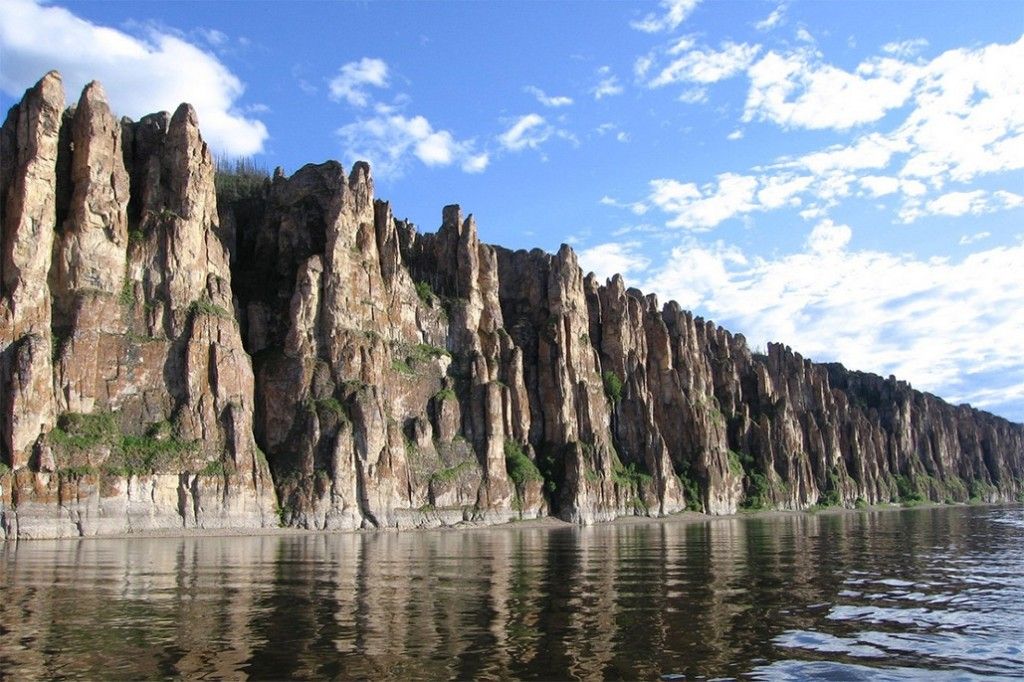 Baikal contains some 45 islets and islands, the largest of which are Olkhon (about 270 square miles [700 square km]) and Bolshoy (Great) Ushkany (3.6 square miles [9.4 square km]). The influx of water into the lake is primarily from rivers, chiefly the Selenga. The only outflow is through the Angara River, a tributary of the Yenisey.
Baikal contains some 45 islets and islands, the largest of which are Olkhon (about 270 square miles [700 square km]) and Bolshoy (Great) Ushkany (3.6 square miles [9.4 square km]). The influx of water into the lake is primarily from rivers, chiefly the Selenga. The only outflow is through the Angara River, a tributary of the Yenisey.
Geology and Climate of Lena Pillars
| Photo: Russiatrek |
The pillars consist of alternating layers of limestone, marlstone, dolomite and slate of early to middle Cambrian age, which are weathered, producing the rugged outcrops.
These types of rocks are commonly formed in marine environments and the horizontal layering and vertical variation indicates marine transgression/regression; with the slate representing the deep marine, slightly metamorphosed shales.
The climate is acutely continental with temperatures reaching as low as -60°C in winter and as high as +35°C in summer.
| Photo: Russiatrek |
| The Most Beautiful Castles Around The World Through Dutch Photographer’s Lenses Vincent Croce, a Dutch photographer, has travelled around the world and Europe to capture the mesmerizing beauty of the ancient castles. |
| Autumn in Japan Through a Vietnamese Lens In Autumn, Kyoto is covered with red and yellow leaves forming part of the slow pace of life in the ancient capital. |
| 12 Breathtaking Forgotten Places And Ruins Around The World 12 breathtaking forgotten places, ruins and historical relics, shared in the ‘Abandoned Beauties’ Facebook group. |
Lena Pillars Nature Park – Комиссия Российской Федерации по делам ЮНЕСКО
On July 22, 2012, the Lena Pillars Nature Park became a UNESCO World Heritage Site. The striking scenery of the park and wild Yakut nature make it the pearl of the region and one of the most beautiful places in the world. The park occupies more than a million hectares, with taiga, dunes, a full-flowing river, and bizarre rocks resembling an ancient Gothic castle or a sleeping dragon.
The Lena Pillars Nature Park is considered a real natural wonder. Its enchanting pristine beauty captures imagination and attracts travelers from all over the world. Some people see a majestic medieval palace when they look at unusual rocks, others — the prototype of the Great Wall from the Game of Thrones. At the same time, if one visits the park at sunset, the rocks may resemble a castle of an evil sorcerer.
Historical value
In fact, the spire-shaped rocks stretching for almost 40 kilometers in the Lena River valley are remnants that survived the weathering of mountain ranges.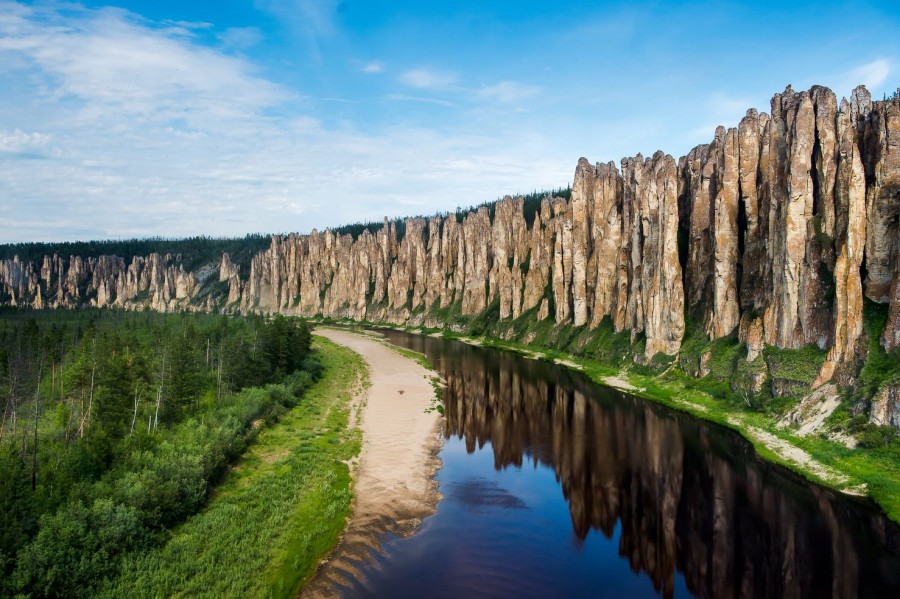 They were formed from the remains of plants and animals that lived on the territory of Yakutia more than 500 million years ago. Over time, depending on the degree of erosion, the rocks acquired the most bizarre forms: Lena Pillars include a rock resembling a human, which the locals call the Stone Man.
They were formed from the remains of plants and animals that lived on the territory of Yakutia more than 500 million years ago. Over time, depending on the degree of erosion, the rocks acquired the most bizarre forms: Lena Pillars include a rock resembling a human, which the locals call the Stone Man.
The researchers also managed to find an early man site in the park that is about 370,000 years old, as well as the remains of a mammoth, an ancient bison, and a woolly rhinoceros. Archeologists discovered many caves with petroglyphs on the slopes of the rocks: ancient people made these paintings with yellow mineral paint and stone tools. The real paleontological treasure of the park is the fossils found there, with ancient invertebrates preserved in them.
Flora and fauna
Today, the Lena Pillars Nature Park is home for living peers of mammoths — the wood bison. Unique Ust-Buotama Farm aims to restore the population of these rare animals that are on the IUCN Red List. Essentially, about 5,000 years ago, most of the bison living in Siberia died out, while the rest moved to North America, from where 30 animals were brought back to the farm.
According to biologists, over 30 species of mammals and about 100 bird species live in the park, including such rare ones as bears, lynxes, wolverines, elks, deer, golden eagles, eagle owls, falcons, and others. Some of these animals and plants are in the Red Data Book of Russia. Some plants, like Redowskia sophiifolia can be found only in the park. So, the Lena Pillars Nature Park is the only place on Earth where travelers can marvel at their delicate white flowers.
Yakutian desert
In Yakutia, one can see an amazing exotic combination of landscapes — sand dunes in the middle of the green taiga. Yakut Deserts, tukulans, are a unique phenomenon. Scientists assume that they were formed on the site of the ancient Lena River, which tens of thousands of years ago flowed to the west of its modern course. Today, the largest Yakut Desert is on the territory of the Lena Pillars Nature Park and tourists can visit it. Not only can they admire its beauty, but go skiing and snowboarding from the hills of tukulan even in summer.
National park
The national park, established on this site, deals with both the conservation and restoration of ecosystems, rare species of flora and fana, and the promotion of sustainable recreation. The Lena Pillars Nature Park is an ideal place for genuine ecotourism. There are several specially equipped nature trails of varying length and complexity, and you can walk them on your own or with a guide. If you wish, you can go rafting along the great Siberian River Lena, admire the picturesque scenery from the observation deck at a height of more than 100 meters, and even climb a small ascent.
Those who prefer less active pastimes can go fishing. There are more than two dozen species of fish in the rivers and lakes of the park, of which the Siberian sturgeon, nelma, taimen, lenok, and whitefish are especially valuable and tasty.
Essentially, this natural and geological monument has been of interest for researchers all over the world for more than half a century.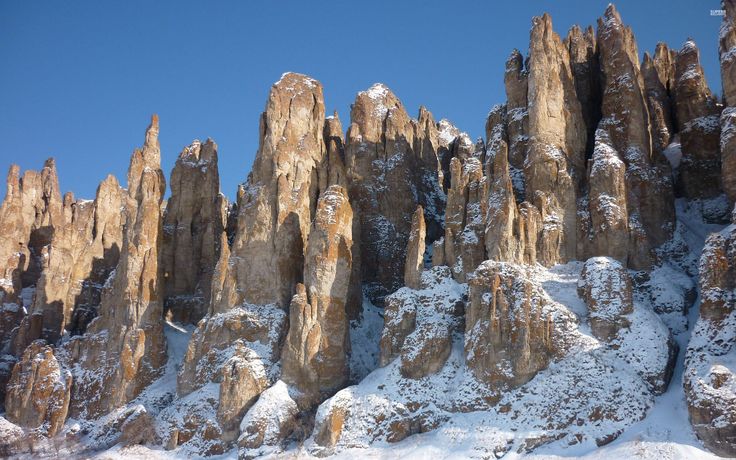 The National Park is actively engaged in the environmental education of children and teenagers and carries out a range of research projects in collaboration with the institutes of the Russian Academy of Sciences.
The National Park is actively engaged in the environmental education of children and teenagers and carries out a range of research projects in collaboration with the institutes of the Russian Academy of Sciences.
Marina Skvortsova
Поездка на Ленские столбы; холод – чуть не убил нас!
- #моя экспедиция
- #россия
29 марта 2021 г.
Продолжающаяся якутская тема — это хорошо, но без… Ленских столбов она не будет полной! Уникальный — проверьте. Грандиозно — есть. Обязательно посмотрите – проверьте! Длинная (~250 км!) линия огромных каменных «пальцев» (~200 м высотой), торчащих из земли вдоль восточного берега Лены ->
Ленские столбы прочно вошли в мой список 100 самых красивых и обязательных к посещению мест на планете с момента его создания, это само собой разумеется.
Дорога до них зимой занимает целый день на машине из Якутска. Сначала вы доберетесь до близлежащего Покровска по вполне приличной дороге. Продолжаешь ехать мимо деревень на левом берегу реки, потом полтора часа по… «ледяной дороге» — такой же ледяной дороге, которая соединяет Якутск с Ленским шоссе. Если вы хотите увидеть, как ездят по этой ледяной дороге, посмотрите кадры с видеорегистратора в конце этого поста…
Продолжаешь ехать мимо деревень на левом берегу реки, потом полтора часа по… «ледяной дороге» — такой же ледяной дороге, которая соединяет Якутск с Ленским шоссе. Если вы хотите увидеть, как ездят по этой ледяной дороге, посмотрите кадры с видеорегистратора в конце этого поста…
Там есть пешеходная дорожка, затем несколько сотен ступенек, по которым вы быстро доберетесь до вершины столбов. Добравшись до вершины, я сразу заметил, что виды зимой заметно отличаются от летних (я был здесь еще в 2013 году). В основном все покрыто снегом или инеем. Очень похоже на Якутск, но «сельский» вариант:
Вид на реку Лену — обалденный. Он такой же грандиозный – и широкий (здесь 3 км!) – как и летом, конечно, только цвет поменялся! ->
Одно но: здесь был мороз! До этой прогулки мы находились на улице при температуре -50°C час или полтора, максимум. Сегодня мы были на морозе намного дольше. Одним словом: ой! Сильнее всего мы чувствовали лютый мороз, когда сидели на санях, которые буксировал снегоход по замерзшей Лене. Мы только на санях проехали три километра по реке, а к подножию столбов уже все покрылись инеем! Брррррр. Так как я не хотел повторять это, я решил вернуться пешком. И я сделал это! Вау! С одного берега Лены на другой – пешком! Посередине реки стало немного шероховато – из-за больших глыб льда, которые мне приходилось объезжать, – а потом стало более чем страшно, когда я заметил несколько трещин во льду (!), проделанных под рекой. вес выпавшего снега, но я сделал это!
Мы только на санях проехали три километра по реке, а к подножию столбов уже все покрылись инеем! Брррррр. Так как я не хотел повторять это, я решил вернуться пешком. И я сделал это! Вау! С одного берега Лены на другой – пешком! Посередине реки стало немного шероховато – из-за больших глыб льда, которые мне приходилось объезжать, – а потом стало более чем страшно, когда я заметил несколько трещин во льду (!), проделанных под рекой. вес выпавшего снега, но я сделал это!
Лена, ты поставила меня на колени!
Ленские столбы в любое время года прекрасны, но надо сказать, что зимой немножко меньше. Потому что почти все покрыто белизной, столбы как бы замаскированы в не слишком далеком расстоянии, а высота скал как-то менее бросается в глаза:
мякоть сами — убедитесь, что вы пришли в сезон, когда вы действительно можете увидеть мякоть, не закутанную в белое одеяло). Да, и попробуйте вариант с вертолетом, если возможно. Вот почему (фото 2013 года):
PS: Ледовая дорога:
youtube.com/embed/Tlv8E5s283c?version=3&rel=1&fs=1&showsearch=0&showinfo=1&iv_load_policy=1&wmode=transparent» frameborder=»0″ allowfullscreen=»true»>Остальные фото нашего путешествия Магадан-Москва здесь.
- Введите адрес электронной почты, чтобы подписаться на этот блог и получать уведомления о новых сообщениях по электронной почте
- Адрес электронной почты*
- *
- Я согласен предоставить свой адрес электронной почты АО «Лаборатория Касперского» для получения информации о новых сообщениях на сайте. Я понимаю, что я могу отозвать это согласие в любое время по электронной почте, щелкнув ссылку «отписаться», которую я нахожу внизу любого электронного письма, отправленного мне для целей, упомянутых выше.
- Больше не показывать мне это сообщение
- Нет, спасибо
ЧИТАТЬ КОММЕНТАРИИ 0
RT @2igosha: Итак, вот мой эксперимент с #Golang: парсер файлового формата #EVTX: https://t.
 co/dMKD4Kt0lR (каким-то образом первая рабочая версия,…
co/dMKD4Kt0lR (каким-то образом первая рабочая версия,…4 года назад
Подписывайтесь на @e_kaspersky
Хвосты чудес Каменный лес Лены в России
Каменный лес Лены также называют Столбами Лены, на самом деле естественное скальное образование примерно в 60 км вверх по реке от Якутска, в России. Столбы Ленса — удивительные каменные сооружения высотой более 150 метров, простирающиеся вдоль реки примерно на 80 км. Это волшебное место очаровывало путешественников с 17 века, однако добраться туда — настоящее испытание.
Каменный лес Лены содержит исключительные свидетельства истории развития Земли и ее живого населения. Найденные здесь многочисленные окаменелости древних организмов являются исключительно сохранившимися свидетельствами весьма значительного этапа в истории органического мира и «бума» биоразнообразия, пришедшегося на нижнекембрийскую эпоху.
Этот эксклюзивный эколого-туристический объект был внесен в список Всемирного наследия в 2006 году.
 Кроме того, в районе Ленских столбов обнаружены останки представителей мамонтовой фауны: мамонта (Mammulhus primigenius Blum), бизона (Bison priscus Boj), ворсистого носорог (Coelodonta antiguibatis Blum), ленская лошадь (Eggus lenensis Russ), северный олень (Rangifer tarandus L) и древние организмы, такие как моллюски, раковины, губки и трилобиты, также были найдены прекрасно сохранившимися.
Кроме того, в районе Ленских столбов обнаружены останки представителей мамонтовой фауны: мамонта (Mammulhus primigenius Blum), бизона (Bison priscus Boj), ворсистого носорог (Coelodonta antiguibatis Blum), ленская лошадь (Eggus lenensis Russ), северный олень (Rangifer tarandus L) и древние организмы, такие как моллюски, раковины, губки и трилобиты, также были найдены прекрасно сохранившимися.Эти изолированные возвышающиеся колонны могут достигать более 100 метров в высоту. Породы столбов сформировались в кембрийских морских бассейнах более 500 млн лет назад и состоят из чередующихся слоев известняка, мергеля, доломита и сланца. Суровый климат этой местности и влажность от реки создают опасные перепады температур от +40°C летом до -60°C зимой. Следовательно, это вызвало криогенный процесс, содержащий действие замораживания-оттаивания, которое разрушает породу, расширяя овраги между ними.
Путешествие начинается из города Москвы, откуда вам предстоит четырехдневное путешествие в сибирский район Якутска.
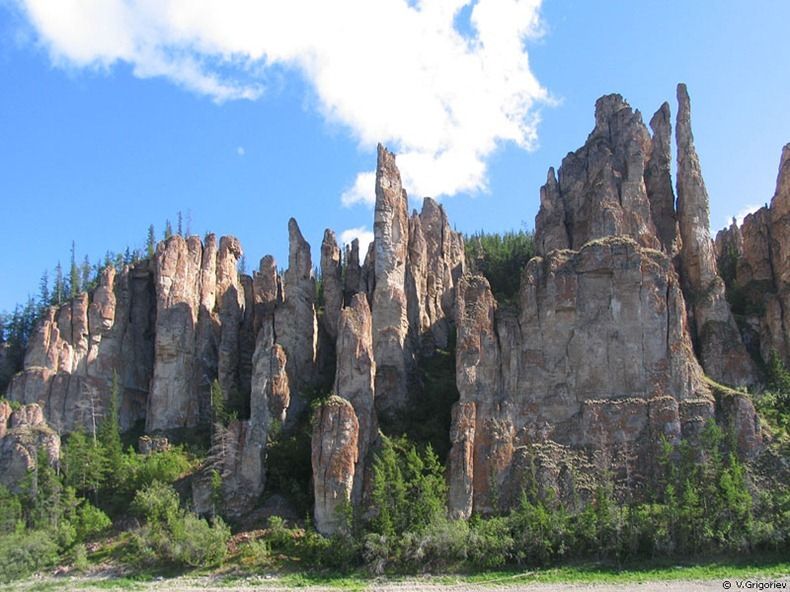 Во-первых, вам нужно лететь в Якутск, причем так долго, что если бы вы летели в обратном направлении, то легко могли бы прилететь в Нью-Йорк. Средняя цена такого полета составляет около 800 долларов. Из Якутска нужно добираться на лодке.
Во-первых, вам нужно лететь в Якутск, причем так долго, что если бы вы летели в обратном направлении, то легко могли бы прилететь в Нью-Йорк. Средняя цена такого полета составляет около 800 долларов. Из Якутска нужно добираться на лодке.Правда, предположительно всего полдня пути вверх по реке, а это занимает значительно больше времени, и местные жители могут предложить вам трехдневную поездку на небольшой лодке примерно за 500 долларов. В конце концов, через 4 дня пути вы сможете прибыть в пункт назначения.
Читать далее – Вафельная скала – большая достопримечательность на озере Дженнингс-Рэндольф, Вирджиния
Найденные здесь многочисленные окаменелости древних организмов являются исключительно сохранившимися свидетельствами очень значительного этапа в истории органического мира
Скалы столбов, образовавшиеся в кембрийском периоде морские бассейны возникли более 500 миллионов лет назад и состоят из чередующихся слоев известняка, мергеля, доломита и сланца.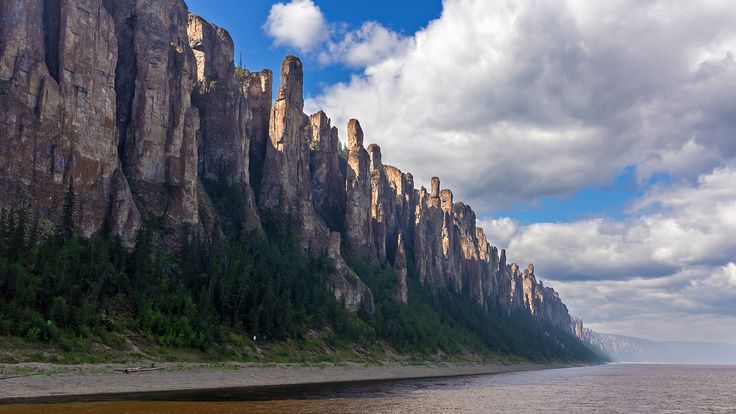

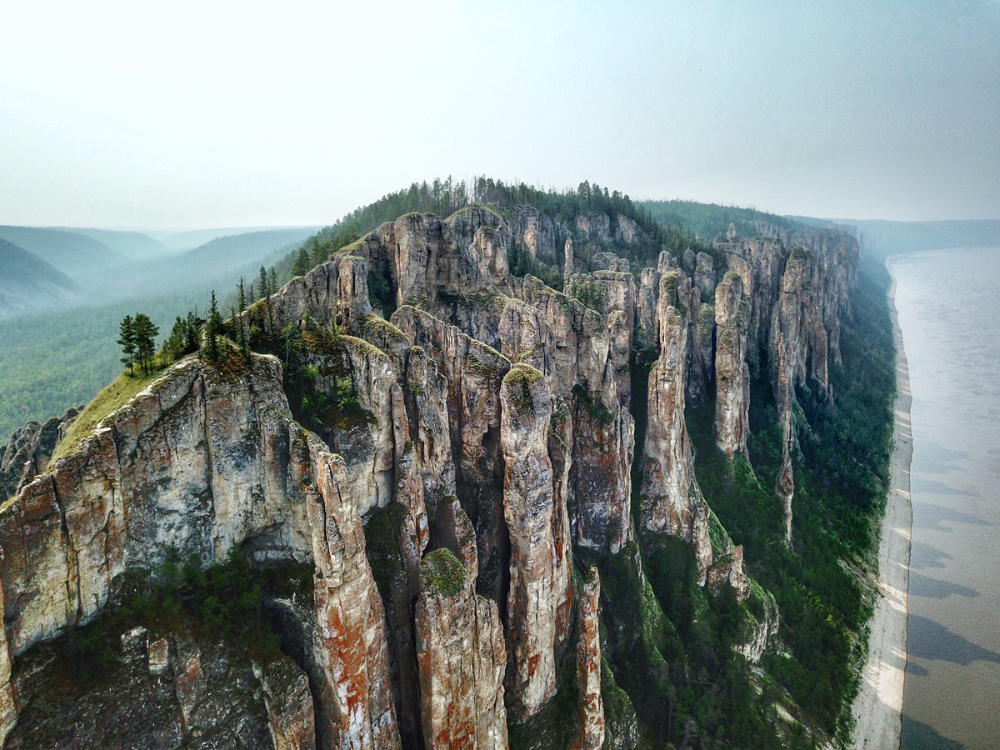
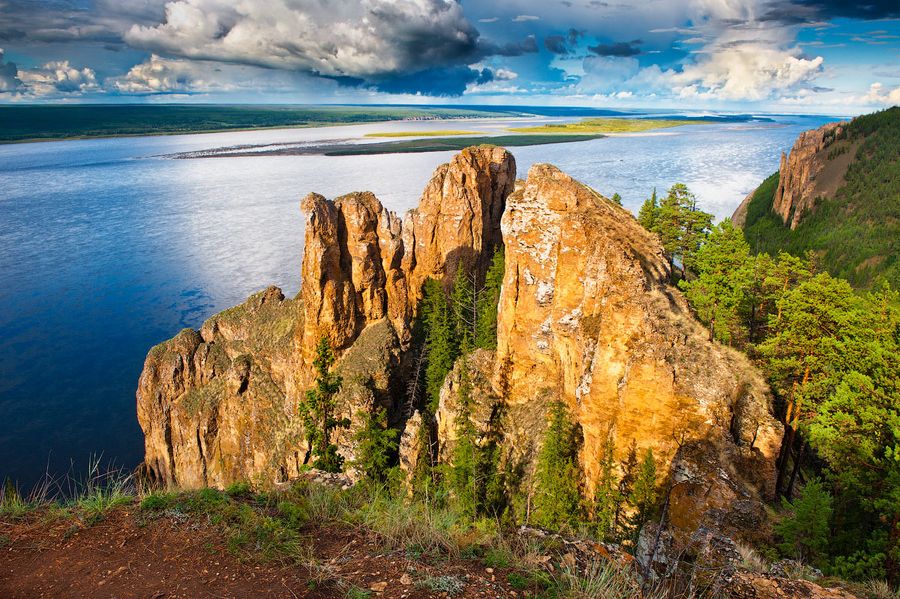 co/dMKD4Kt0lR (каким-то образом первая рабочая версия,…
co/dMKD4Kt0lR (каким-то образом первая рабочая версия,…